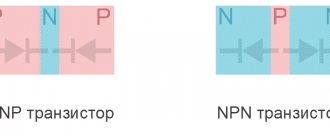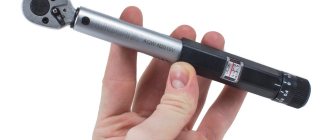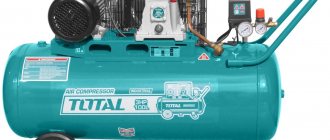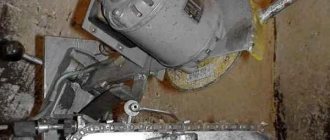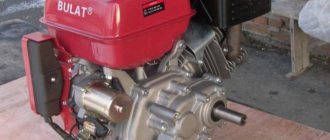Modern communication methods are developing at lightning speed, new ways of transmitting information, parcels and cargo are emerging. It is impossible to imagine a single enterprise that would not use state mail to send and receive documents to counterparties, e-mail for correspondence with suppliers and clients, as well as an internal messenger that ensures constant communication between departments and employees as a whole. Pneumatic mail did not stand aside either.
Modern pneumatic mail systems are used everywhere not only as an archaic method of transmitting information and parcels, but also as a communication tool that ensures fast and accurate communication within enterprises and entire factories.
Features of pneumatic mail
Over the past few years, pneumatic mail has begun to actively develop in Russia. Pneumatic mail is used in the following areas :
- In large banks;
- In warehouses;
- In large government agencies;
- In high-rise buildings.
Pneumatic mail can be effectively used in any institutions whose buildings or warehouses are located on different floors or in buildings located close to each other.
Pneumatic mail is an extensive network of pipes through which special capsules deliver goods to various parts of the building. If there is a desire and means, main pipes of pneumatic mail can be laid even between knowledge areas that are located quite far from each other. Depending on the distance, highways between buildings can be laid either through the air or underground.
By implementing a pneumatic mail system, an organization can significantly increase labor productivity by simplifying and speeding up the process of transferring various documents, money and various securities. Most often, pneumatic mail is found in those organizations that, due to their type of activity, are forced to work with a high flow of various documents.
⇡#History
Pneumatic mail is a curious type of system for moving both mail and small cargo under the influence of compressed or rarefied air. Through special pipelines located underground, special passive containers (capsules) are transported from one point to another at a decent speed. The name of the post office is transparent: it comes from the Greek word “pneumatikos” - “air”.
By the way, the Greek “roots” of pneumatic mail are very real. After all, the ancient Greeks were the first to learn how to use compressed air. Thus, the ancient Greek physicist-inventor Ctesibius of Alexandria (approximately 285-222 BC) designed a hydraulis (hydraulic organ), a vacuum pump and a catapult that threw spears using compressed air. Ctesibius outlined his thoughts in a number of scientific works, including the work “On Pneumatics,” which, however, has not survived to this day.
The ancient Greek engineer Heron of Alexandria, who lived in the 1st century BC, had a great influence on the development of pneumatic transport. The fundamentals of pneumatics were described by him in the famous treatise “Pneumatics”.
Denis Papin
With the fall of ancient culture and the spread of Christianity in Europe, the so-called “dark times” began, therefore they started talking about pneumatic mail as a means of exchanging postal messages only in the 17th century. More specifically, the French physicist Denis Papin proposed this type of communication in 1667. Using a small difference in pressure in the pipe, Papin found out that an object placed in a pipe experiences a force that can give the object some speed. Thus, the theoretical possibility of transporting small objects under the influence of compressed air was convincingly justified.
However, the creation of pneumatic mail was still far away. It was not until 1792 that compressed air was first used to transport written messages through a pipe. This system was located in the fifty-meter bell tower of Vienna's St. Stephen's Cathedral. It was connected to a gatehouse, where a written message was sent through a pipeline in a special metal cartridge about a fire in the city noticed from the bell tower. In this form, the design functioned until 1855 and represented the first type of pneumatic mail (“internal”), when the system is located in one building. Another type (“external”) - pneumatic mail connecting various areas or buildings of the city - was implemented later: in 1854 in London.
Josiah Latimer Clark
The credit for creating the first city pneumatic mail belongs to Josiah Latimer Clark, who patented a method “for transmitting letters or parcels between places by means of air pressure and vacuum.” Clarke's system consisted of 1.5-inch diameter pipes laid between the London Stock Exchange and the Central Telegraph Office (about 200 m). Cylinders with letters, parcels and small parcels moved along them at a speed of about 6 meters per second.
In fairness, it is worth mentioning the creator of the postage stamp, Rowland Hill, who modeled a system of underground pneumatic pipes to speed up the sending of letters.
In the summer of 1861, the London Pneumatic Despatch Company, founded two years earlier, conducted a demonstration of a pneumatic transport road in Battersea. The 30-inch diameter pipes have successfully transported cargo weighing up to three tons and even several passengers placed lying down in a four-wheeled trolley.
Battersea pneumatic transport road trial
A permanent line with the said "trolleys" began operating between Euston railway station and the North West Post Office on Eversholt Street from the winter of 1863. One vehicle could hold up to 35 bags of mail. The travel time between terminals was about a minute. The first arrival of the mail trolley became a national event and was covered in the London News on February 18, 1863.
The Pneumatic Despatch Company's postal pneumatic system was unique in many ways and, except for a couple of other places, was not built anywhere else. In 1874 it ceased to be used. Even moving the head in person did not help - a clear demonstration of the safety of this method of transportation. Two vehicles were restored in 1930 and are now kept in museums in London and York.
"Pneumatic machine" on a well-deserved rest
But the effectiveness of the London pneumatic mail in its “classic” form, which took over part of the traffic of telegraph lines, was appreciated all over the world - similar systems were created in Berlin (1865), Paris (1866), Vienna (1878) ), Prague (1887), Philadelphia (1892), New York (1897), Rio de Janeiro...
If in London the transport pipes were located in a star shape, which is why various receiving stations communicated directly only with the central one, then in a number of European cities (for example, Paris, Berlin and Vienna) the arrangement of pipes was circular, so individual stations could “contact” with each other.
By the way, in Berlin in 1884, the circular-type postal pneumatic network was transformed into a star-shaped one. The rapid development of German pneumatic mail (in German - “Rohrpost”) in the second half of the 19th century is associated with the activities of the Postmaster General of the German Empire, Heinrich von Stephan, the founder of the Universal Postal Union.
By 1900, in Berlin, as well as in the suburbs of Schöneberg, Rixdorf and Charlottenburg, the total length of pneumatic postal pipes was almost 120 km. The network united 53 stations. The pipes used were cast iron, they had an internal diameter of 6.5 cm and were buried at a depth of 1.25 m. The length of the aluminum capsules sent was 15 cm.
Diagram of the Berlin postal pneumatic network (1928)
In 1913, more than 12 million pieces of mail were delivered using German pneumatic mail.
In 1916, the Union Postale magazine published statistics on pneumatic mail throughout the world. It turned out that the length of the pipes was approximately 1000 km, of which more than 400 km “belonged” to the French pneumatic mail. Data from 1934 confirmed the primacy of the Gauls - the Parisian pneumatic mail network with a length of 437 km was the longest in the world.
The Russian Empire also did not remain aloof from progress - pneumatic mail was installed at certain post offices in St. Petersburg and Moscow to speed up the movement of correspondence. In the pre-revolutionary Russian Empire, the term “air mail” was used to designate pneumatic mail, which currently has a different meaning.
The three-seater DB-2B Rodina aircraft was equipped with pneumatic mail
There was pneumatic mail in large cities of the Soviet Union. Moreover, it was even installed in airplanes, for example, in the ANT-20 “Maxim Gorky” and DB-2B, “Rodina” (on the latter, on September 24-25, 1938, the women's world record for the distance of a non-stop flight in a straight line was set).
In the USSR, pneumatic mail acquired great importance on the railways. One of the first such systems was put into operation in 1959 at the Leningrad-Sortirovochny-Moskovsky station.
The popularity of pneumatic mail was so great that postage stamps were issued to pay for its services in different countries of the world. Special envelopes and postcards were also widely printed. In addition, marks were made with special stamps and labels [8].
Italian stamp for pneumatic mail
How does pneumatic mail work?
Any, even the most complex and extensive pneumatic mail system works according to a single algorithm:
- You need to place the necessary documents or money in the capsule, closing it tightly;
- The capsule is inserted into the line;
- The capsule moves towards the main compressor;
- The compressor sends the capsule to the final recipient;
- The recipient removes the capsule and takes out the documents.
Before sending the capsule to the recipient, the user must enter the address of the final station to which the capsule will be sent. After specifying the desired address, all that remains is to insert the capsule into the hole of the station. The capsule is sent to the main compressor, where the process of redirecting it to the end user takes place. The arrows take the necessary positions to send the capsule in the desired direction, and the system controller gives permission for further movement of the capsule.
When the capsule passes through the key pipeline points, the process is strictly controlled. For this purpose, special optical sensors are used that instantly respond to any problems in the system. After the capsule passes the last arrow, it stops at its final station. There the recipient must remove the capsule and send it in the opposite direction.
Since the entire process of moving the capsule is strictly controlled, the possibility of clamping the capsule in one of the sections of the pipeline is practically excluded. If this does happen, then the entire pneumatic mail system goes into emergency mode. If the capsule does not reach the recipient within a certain time, the system blocks all other stations and begins to analyze the entire system using sensors. Then a purge procedure is carried out, which returns all the capsules stuck halfway to the controller. After the purge procedure is completed, all capsules are sent to the release station. After this, the system is checked and restored automatically for further operation.
Capsule for government officials
Still in London, at the beginning of 1860 it was decided to create a pneumatic tunnel for the transmission of mail between several post offices within the city. For these purposes, a series of tunnels were made, the height of which did not exceed 1.2 m. Special rails were laid inside the tunnel, along which cargo capsules 2 meters long and half a meter high traveled. Rubber seals were used as sealing elements. This device made it possible to simultaneously transport about 3 tons of mail in one trip, the speed of which reached 60 km/h.
Due to human curiosity, it was decided to take a person for a ride in such a miracle car, which was done with our own. This experiment ended successfully and many high-ranking individuals were going to develop a project to create a pneumatic capsule to transport officials from parliament to their native land.
In order to create vacuum draft, a fan was installed at the beginning of the tunnel, which was made in the form of a pneumatic wheel. Its design consisted of many iron blades with a diameter of about 6 m, which had the shape of a disk and acted as a centrifuge, pumping out all the air from the vacuum tunnel during movement. Everything seemed promising, but one problem arose, which was the rather complex process of organizing the tightness. Yes, it was possible to create it, but more often not than yes, which led to the carts constantly getting stuck inside the tunnel. The problem could not be solved even when modification of the pneumatic wheel increased its original power by almost 6 times. All efforts lasted right up to 1875, after which it was decided to eliminate the created tunnel.
Pneumatic mail device
The pneumatic mail is a whole unit consisting of a set of various components:
- Powerful compressor. The power of the unit depends on the type of pneumatic mail. If the system is small in size, then a powerful compressor is not needed; if the system connects several buildings, then the compressor, on the contrary, must be as powerful as possible in order to perform the tasks assigned to the pneumatic post;
- Control unit for this compressor;
- Central controller;
- Power supply for the entire system;
- Trunk type pipelines;
- Route working arrows intended for movement through stations;
- Control panel.
Most pneumatic mail equipment can be placed directly behind a suspended ceiling. Thus, the system practically does not spoil the interior of the building. The compressor in the system must be double acting. It creates pressure and vacuum in the system. The “Bikepass” system is responsible for braking the capsule, which is capable of quickly and effectively stopping the capsule when it arrives at the desired point.
The central controller is responsible for all processes occurring during the operation of the pneumatic mail. At its core, it is a computer that has a powerful processor and built-in memory with software. If a failure occurs in the controller program, the operation of the pneumatic mail will immediately stop. To prevent this from happening, you need to choose only high-quality equipment. Automatic route switches are needed in order to quickly and efficiently connect sections of the main pipeline to each other, to ensure the fastest and shortest route.
The most famous manufacturer of equipment for pneumatic mail is. Most pneumatic mail systems work with this equipment. You can buy pneumatic mail from Moscow by contacting our specialists.
The main advantages of pneumatic mail
Currently, seeing the demand for pneumatic mail, a stream of various pneumatic mail systems from different manufacturers has literally poured into the Russian market. Taking advantage of buyers' ignorance of this issue, some sellers offer low-quality goods under the guise of a famous brand. It is recommended to select equipment from, which guarantees high-quality operation of the system for a long time.
The main advantages of using pneumatic mail systems are:
- A lot of working time is freed up, which was previously spent on transporting papers and other documents;
- Pneumatic mail can be easily upgraded, which will help quickly expand the system or add functionality to it;
- This equipment is very reliable under proper operating conditions;
- High speed of capsule delivery;
- Possibility to lay a pipeline from one building to another.
By purchasing pneumatic mail, the head of an enterprise will be able to quickly increase the efficiency of departments whose work is related to securities and documents.
